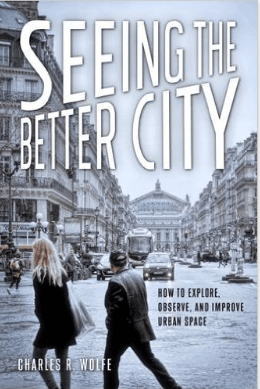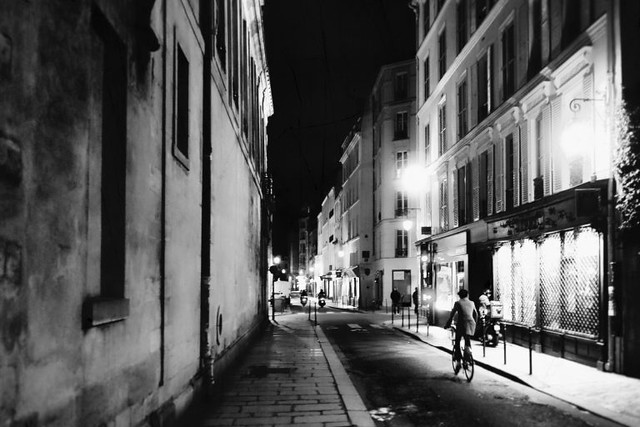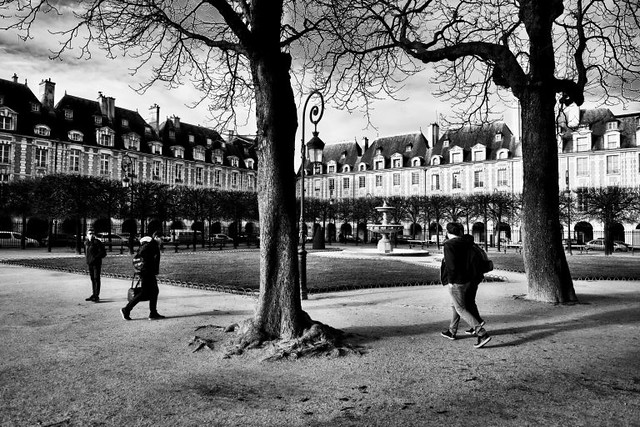A Placemaking Journal
Want to Improve Your City? Start taking pictures
 In Chuck Wolfe’s absorbing new book, Seeing the Better City, he encourages readers to think with our eyes and communicate with visual imagery in order to improve our cities. With the proliferation of smartphone cameras and an endless array of easily accessible, web-based platforms on which to display them, virtually everyone is now a photographer. And, with cities on the ascendance, many of them confronting both excitement and worries about growth and development, more people than ever want to make them as hospitable as possible. It’s time to put those trends together, argues Wolfe, and use our eyes and our cameras “to explore, observe, and improve urban space,” to quote the book’s subtitle.
In Chuck Wolfe’s absorbing new book, Seeing the Better City, he encourages readers to think with our eyes and communicate with visual imagery in order to improve our cities. With the proliferation of smartphone cameras and an endless array of easily accessible, web-based platforms on which to display them, virtually everyone is now a photographer. And, with cities on the ascendance, many of them confronting both excitement and worries about growth and development, more people than ever want to make them as hospitable as possible. It’s time to put those trends together, argues Wolfe, and use our eyes and our cameras “to explore, observe, and improve urban space,” to quote the book’s subtitle.
He makes a good case, and provides an engaging guidebook for going about it, with examples. I have long admired Wolfe’s evocative and skilled photography, and the book includes seventy of his photographs.
While waiting for my review copy of Seeing the Better City, two potential antecedents already on my bookshelves came to mind: The first was Frederick Franck’s short 1970s classic, The Zen of Seeing. It is about seeing — and drawing — as an act of meditation, and it is not particularly urban. It is also very intuitive and right-brain in its approach, and does not attempt the formidable intellectual underpinning found in Wolfe’s book (which includes 26 pages of endnotes), but I like it a lot. And it has something important in common with Seeing the Better City, which is its instruction that seeing — really seeing — asks us to pay attention to our surroundings, to be mindful.
The second potential antecedent that I thought of was Tony Hiss’s 1990 book The Experience of Place, which provided my first memorable introduction to serious thinking about how we humans interact with our built environment, including urban places. Its intricate descriptions of how Hiss personally experienced such city locales as Brooklyn’s Prospect Park and Manhattan’s Grand Central Terminal made me think about cities in a new way; the book was one of a small number of early-1990s works by various urban thinkers that gradually inspired me to change my career. Hiss, too, was admonishing us to pay attention, but he added an important purpose to the endeavor:
“Make sure that when we change a place, the change agreed upon nurtures our growth as capable and responsible people while also protecting the natural environment and developing jobs and homes enough for all.”
That pretty well summarizes the intent of the last twenty years of my career and that of many fellow travelers, including Wolfe. Indeed, Hiss must have made an impact on Wolfe as well as on me: The Experience of Place is among the many erudite works cited in Seeing the Better City.
 But Hiss primarily used words, not images, to make his case. As a writer and practicing attorney, Wolfe understands well the world of verbal communication. But Seeing the Better City argues that words are not sufficient if we really want to capture the essence of places and especially if we want to advocate their betterment.
But Hiss primarily used words, not images, to make his case. As a writer and practicing attorney, Wolfe understands well the world of verbal communication. But Seeing the Better City argues that words are not sufficient if we really want to capture the essence of places and especially if we want to advocate their betterment.
In particular, the book suggests that we compile visual “urban diaries” of the cities we inhabit and visit as we look for and document aspects of those cities, capturing pictures of things we like (and don’t like) and supplementing them with contextual annotation. We can then use those diaries as compendia of lessons learned, to argue for improvement.
I take a lot of photos myself, and consider myself an enthusiastic if (very) amateur maker of images. But I am mostly seeking beauty and mood in my photography; I am feeling and sensing more than thinking. Wolfe, however, is arguing for something else. In a passage about documenting cities while traveling, he stresses that those seeking to see the better city must go beyond mere enjoyment and dig deeper:
“Beware of nostalgia when observing historic landmarks and places. It is not surprising to be motivated or awestruck; the challenge is to think about why. What is it about seeing such a place, or otherwise sensing it, that causes any particular reaction?”
Later on the same page, we are reminded that improving places is not just about physical urban form, but fundamentally about people:
“Follow basic human needs as starting urban diary themes. They will define what you see along the way. They may be as simple as the characteristics of where people live, or where the less fortunate find a place to sleep, or the locations available for a trip to a store, restaurant, or café . . .
“Center on people and, as already noted, attempt to include them in photographs, even from afar. How we see people interacting with the physical environment, in combination with other factors, will influence what we take away from exploration and observation.”
The book is peppered with examples from Wolfe’s own extensive travels and explorations, many of them from abroad. It suggests, for instance, that we can draw useful observations about such modern hot-button issues as urban density, building height, and use of alleys among the centuries-old World Heritage Sites in Edinburgh, Scotland. Closer to Wolfe’s home in Seattle, he notes that photographs of older residential buildings in his neighborhood can be used to show that neighborhood character can be preserved when multi-unit and single-family residences sit next door to each other, so long as the buildings are harmoniously scaled and similarly oriented to the street.
And that kind of advocacy is the ultimate aim of Seeing the Better City. Wolfe is a land-use lawyer and urbanist, and he believes his causes can be assisted by photographs and other urban-diary tools. He stresses that the book is not about observation for observation’s sake but about applying positively the best of what we see. By so doing, Wolfe hopes we can get past what he characterizes as “NIMBY-driven, protectionist discussion” and move forward with growth and development of a type and in a way that people can embrace.
To that end, the book’s penultimate chapter is devoted to putting visual urban diaries to use in “policies, plans, and politics.” Wolfe presents six examples where approaches similar to those he advocates have already been encouraged by municipal planners in the US, Canada, and Australia as part of their public engagement processes, to help inform their decisions. And he further suggests that, beyond planners, developers too can encourage residents to use an urban-diary approach to help developers tailor their plans and make them more likely to gain acceptance. Wolfe believes that, using urban diaries, citizens who might otherwise feel that they have no choice but to say “no” to neighborhood change can discover and indicate what they would say “yes” to. Now that is a laudable objective.
I might go even further and urge that neighborhood groups and environmentalists seize the initiative and use photographs and diaries to come up with their own proposals, well before planners or developers begin considering their options. Wolfe gets close to this possibility with references to crowd-sourcing and citizen empowerment but does not fully develop it.
I think the idea may hold promise. The simple truth is that, in most if not all places, change is going to occur. And most every place could use some improvement. While putting together a bottom-up neighborhood vision without prompting from above requires a degree of organization and leadership, most communities have natural organizers and leaders among their residents, and just about everyone is interested in achieving the best for their neighborhoods.
To be effective, resident-initiated visions eventually would have to be refined by professionals, of course, and translated into a vocabulary that public officials can work with. But I think Wolfe’s ideas, as articulated in Seeing the Better City, could help get the process started. By so doing, they also just might help us get ever closer to Tony Hiss’s elusive goal of assuring that change “nurtures our growth as capable and responsible people” while protecting the environment and providing jobs and homes for all. Sounds good to me.
Originally featured on the Huffington Post. Reprinted here with Kaid’s permission. Move your cursor over the images for credit information.
If PlaceShakers is our soapbox, our Facebook page is where we step down, grab a drink and enjoy a little conversation. Looking for a heads-up on the latest community-building news and perspective from around the web? Click through and “Like” us and we’ll keep you in the loop.




